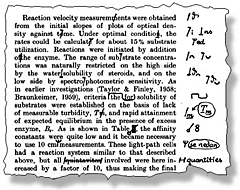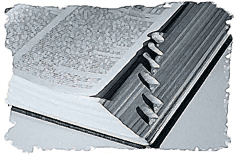LINE EDITING (when this term is properly used; it’s sometimes called SUBSTANTIVE EDITING, and my first managing editor called it DEPTH EDITING) incorporates what is usually called copy editing, but typically extends to:
- pruning unnecessary words, and inserting necessary ones; suggesting or substituting more apt word choices or figures of speech
- supplying or rewriting transitional words, phrases, or sentences to sharpen and clarify the author’s train of thought, or to enhance the gracefulness and flow of the narrative. (The misuse of transitional adverbs is, I’ve learned, one of the most common errors committed by inexperienced writers.)
- deleting or modifying repetitive material, and deleting or transposing (moving elsewhere in the text) digressions that distract from the narrative
- reorganizing, or suggesting reorganization of, entire paragraphs or sections of text, often rewriting or recasting subheads or creating new ones — or rewriting chapter titles — to guide the reader better through a text
- querying and/or revising or rewriting unclear, ambiguous, or confusing or awkward text, including querying the author and/or managing editor as per the description under “Copy Editing” above. A line or substantive editor is more likely to also query the author regarding the logic of argument in the text, perhaps questioning seemingly inaccurate or unsupported statements, or data for which evidence is apparently not supplied (and not referenced in footnotes).
For books edited by Robert Cohen, click here.
For "How I Edit," click here.
DEVELOPMENTAL EDITING involves working with an author while a manuscript is still in draft or rough-draft form — or even prior to that — to help the author create the best possible book: extending, for example, to the desirable shape and scope of the work; its most effective organization, including chapters, section divisions, and transitional material; what illustrations, charts or tables, sidebars, or other material might enhance the book and more forcefully convey the author’s message; and the necessary degree and appropriate format of sourcing (footnotes or endnotes/bibliography).
A MANUSCRIPT CRITIQUE is usually performed after a preliminary manuscript is completed, and typically involves evaluating that preliminary manuscript with respect to many or all of the same considerations identified in the previous description.
 FACT-CHECKING, to a lesser or greater extent, is sometimes included within copy editing or line editing responsibilities. At a minimal level (though even this level is not always expected as part of a copy editor’s or line editor’s work), fact-checking may mean verifying easily checkable or seemingly inaccurate dates, spellings (of names, places, etc.; correct spelling of general vocabulary should always be verified by a copy or line editor), and the like — and resolving (instead of, or in addition to, querying) inconsistencies with respect to names, places, dates, etc. FACT-CHECKING, to a lesser or greater extent, is sometimes included within copy editing or line editing responsibilities. At a minimal level (though even this level is not always expected as part of a copy editor’s or line editor’s work), fact-checking may mean verifying easily checkable or seemingly inaccurate dates, spellings (of names, places, etc.; correct spelling of general vocabulary should always be verified by a copy or line editor), and the like — and resolving (instead of, or in addition to, querying) inconsistencies with respect to names, places, dates, etc.
On a more ambitious level — which would always be specified as part of a copy or line editor’s responsibilities — fact-checking means verifying every verifiable fact or proposition, even when that involves extended research on the Internet or resort to library (or home library) reference materials or library telephone reference services.
Sometimes fact-checking on one or the other level is added to the job description when an editor finds numerous factual errors or discrepancies and makes the managing or supervisory editor aware of that.
 PROOFREADING means reviewing typeset copy line by line — usually but not always against an already edited manuscript — checking for typos, including unintentional repetitions of letters or words; errors in spelling and, sometimes, punctuation; formating and typographical errors or inconsistencies; and the like. Occasionally a proofreader will, especially in an unedited or carelessly edited work, spot obvious errors in grammar, syntax, or usage and correct them (or, alternatively and as appropriate, alert the author or managing editor); but some publishers mistakenly engage a professional to proofread a manuscript — especially an unedited or carelessly edited one — when they really intend (and need) it to be line or copy edited. PROOFREADING means reviewing typeset copy line by line — usually but not always against an already edited manuscript — checking for typos, including unintentional repetitions of letters or words; errors in spelling and, sometimes, punctuation; formating and typographical errors or inconsistencies; and the like. Occasionally a proofreader will, especially in an unedited or carelessly edited work, spot obvious errors in grammar, syntax, or usage and correct them (or, alternatively and as appropriate, alert the author or managing editor); but some publishers mistakenly engage a professional to proofread a manuscript — especially an unedited or carelessly edited one — when they really intend (and need) it to be line or copy edited.
 LEXICOGRAPHY is aptly (and concisely) described in David Crystal’s A Dictionary of Language as “the art and science of dictionary making.” In writing (and, in my case, also editing others’) definitions, a lexicographer consults, and often adds to, the dictionary’s citation files (illustrating how the word in question is being used in general-interest and/or specialized publications and other media) — and must learn how to discern the sometimes subtly distinct senses of a given word reflected in different citations and usages. Other lexicographical determinations involve whether one or more usage labels (indicating, for example, whether a word is archaic or obsolete, or is considered informal or vulgar) should be appended to a definition; which neologisms (new words or expressions) should be included in the dictionary (or recommended for inclusion); and which existing but now little-used entries should be deleted. LEXICOGRAPHY is aptly (and concisely) described in David Crystal’s A Dictionary of Language as “the art and science of dictionary making.” In writing (and, in my case, also editing others’) definitions, a lexicographer consults, and often adds to, the dictionary’s citation files (illustrating how the word in question is being used in general-interest and/or specialized publications and other media) — and must learn how to discern the sometimes subtly distinct senses of a given word reflected in different citations and usages. Other lexicographical determinations involve whether one or more usage labels (indicating, for example, whether a word is archaic or obsolete, or is considered informal or vulgar) should be appended to a definition; which neologisms (new words or expressions) should be included in the dictionary (or recommended for inclusion); and which existing but now little-used entries should be deleted.
Writing (and, by the same token, editing) definitions is a difficult craft to master and requires painstaking attention to detail — but it can be a deeply satisfying activity, and profession, for those who love words.
In WRITING SEMINARS and WORKSHOPS, participants’ own writing samples along with writing exercises and assignments are reviewed, corrected, and rewritten to teach principles of grammar, usage, and syntax; thinking through the organization and purposes of a given piece of writing; effective punctuation and transitions; and other principles of successful written communication. Quizzes, handouts of good newspaper and magazine writing, and examples from songs, sports, and popular culture enliven classes, engage interest, and help teach good writing by example and repetition. Intensive one-on-one coaching work with individual participants is also available.
For original writing by Robert Cohen, click here.
© Robert L. Cohen
^ to top of page |